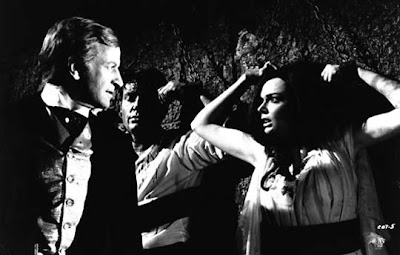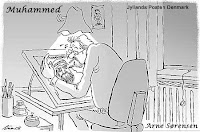Nightmare Castle (aka "The Faceless Monster", "Night of the Doomed" and "Lovers From Beyond the Tomb") (1965)
Starring: Barbara Steele, Paul Muller, Lawrence Clift, and Helga Line
Director: Mario Caiano
Rating: Seven of Ten Stars
After psychopathic 19th century mad scientist Stephen Arrowsmith (Miller) tortures to death his unfaithful wife (Steele), and her lover, he uses her blood and a process he's developed to restore youth and beauty to his own mistress, Solange (Line). He later marries his first wife's mentally unstable half-sister, Jenny (also Steele) to retain control of the fortune that had been willed her... and to ultimately driver her insane and murder her for a fresh supply of blood for Solange's beautification treatments. He even cleverly invites Jenny's long-time doctor, Dereck Joyce (Clift) to stay at the castle, so there will be a witness to Jenny's unfortunate, tragic undoing. But even before Arrowsmith can put his evil schemes into motion, Jenny starts having strange visions and dreams, and Dr. Joyce becomes convinced that some outside force is wrecking havoc on her mind, and that these forces are ghosts haunting the castle. Has the first Mrs. Arrowsmith come back from the dead for revenge, to protect her half-sister, or both? Or is there a more rational answer to the unfolding events?

The above summary of "The Faceless Monster" (more often seen under the title "Nightmare Castle") may sound like its loaded with spoilers, but there's nothing there that doesn't come to light in the first half hour or so of this very creepy gothic horror flick.
Decently acted, well-photographed, decently staged, and full of shocking violence and interesting twists, the film suffers slightly from too leisurely a pace during its middle section, and from a villain whose motivations seem to change more often than most people change their underwear: He's motivated by greed... no, he's motivated by a devotion to science... no, he's motivated by love for Solange... no, he's motivated by spurned love for Muriel, the unfaithful woman he beat, electrocuted, and burned to death... no, he's motivated by... oh, who the hell knows?! Perhaps this is one character where just noting that he's a murderous madman is all the information you need, and it works perfectly, something that is rarely the case in fiction and films. Stephen Arrowsmith appears to be pure evil, and he's evil because he can be, with no need for justification or rationalizations. I still wonder if things in the nightmare castle might not have been a bit more horrifying if Arrowsmith had been better defined.
While Barbara Steele manages to enrich just about every film she's been in, I'm not sure I put as much stock in her dual role as half-sisters Muriel and Jenny as I've seen some reviewers do. The parts reveal the limitation in her talents rather than show her strengths. Steele simply does not have the range and flexibility to change between characters by shifting her facial expressions and gestures, something that's absolutely essential in a film of this kind, with situations like the one Jenny and Muriel are in during the film's second and third acts.
All my complaining aside, "The Faceless Monster"/"Nightmare Castle" is a fine gothic horror movie with a deliciously evil villain and some great ghostly twists (the final 10-15 minutes are truly grand, in a twisted way).

































.jpg)
